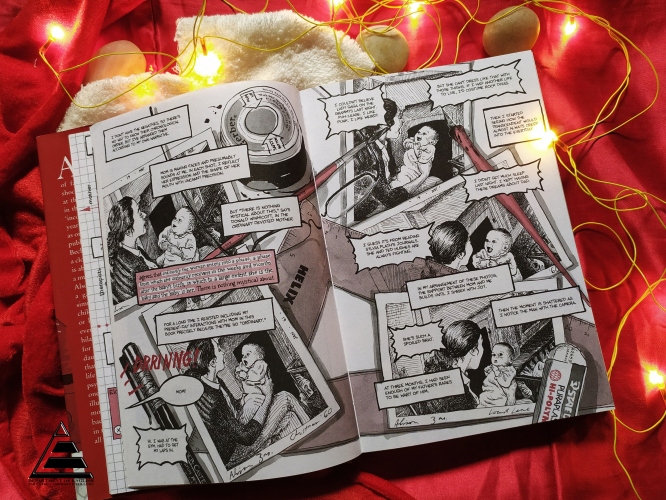In India, comics and graphic novels, though relatively less spoken of, are gradually becoming a force to be reckoned with

It is often taken for granted that comic books are meant for kids, and never adults. This assumption, however, is no longer relevant. In light of the popularity of the Marvel cinematic universe, and contemporary DC TV shows, like Watchmen and The Boys, fans both new and old are journeying to the humble beginnings of these tales – the faithful comic book. The Book.ish Book Chat Club at Parvatibai Chowgule College of Arts and Science–Autonomous, has taken up the gauntlet in this regard.
Will Eisner, the American author and cartoonist, advocated that comic books embody a “voluntary cooperation” “between artist and audience.” The form of the graphic novel has gained huge impetuous over the last few years as a medium of storytelling. Books like Persepolis by Marjane Satrapi, and Zahra’s Paradise by Amir and Kahlil, as well as Joe Sacco’s Palestine, unabashedly speak of political persecution and territorial disputes in Tehran and Palestine respectively. Coming-of-age graphic novels are currently the rage. Nidhi Chanani’s Pashmina, is about a little girl in search of her Indian roots upon moving to the USA, while Fun Home: A Family Tragicomedy by Alison Bechdel has been a fan favourite since 2006.
For years, comics and graphic novels have developed their forms abroad both covertly and overtly. Three of the behemoths dominating the comic book industry are USA, Europe, and Japan. While relatively a niche hobby, reading and collecting comics and graphic novels did not become widely known until Art Spiegelman’s Maus (1992). Winning the prestigious Pulitzer Prize jettisoned graphic novels into general public consciousness. Spiegelman’s Maus is a mix of genres and tells the tale of his Jewish father and his harrowing survival through the holocaust in Poland.
Closer to home, Indian comics and graphic novels, though relatively less spoken of, are gradually becoming a force to be reckoned with. Publisher Yoda Press’ pair of graphic anthologies, First Hand: Graphic Non-fiction from India under the editorial of Orijit Sen and Vidyun Sabhaney, were warmly received. Volume 2 in particular, features beautiful line work and stories of real-life accounts of minority communities like the Devadasis, the Jarawas of the Andamans, and other issues faced by fringe communities in India. Orijit Sen is also the author and artist of River of Stories (1994), considered to be one of India’s first graphic novels. The book’s detailed illustrations, dry wit and satire take no prisoners. The reader cannot shy away from the very real issues surrounding the construction of the Narmada Dam.
The Department of English at Chowgule College has been running the Book.ish Book Chat Club since the onset of the pandemic in February 2020. The club is entirely student-run, and a string of students from both the Arts and Science fields have played hosts for all its sessions thus far. Book.ish was founded in the hopes that young adults from South Goa would find a space to meet other like-minded readers. It all began one day with a simple declaration from the MA English students. “None of our friends read because we want to anymore,” they insisted. Though not wholly unexpected, the faculty was taken aback. Reading, they said, had turned into a chore. Here they were spending hours on social media because they did not know how else to pass their time cooped up at home. While most of our present lives have reduced to human interaction through phone screens, we still maintain that we need to be social. So with optimism in our hearts and a prayer on our lips, Book.ish was launched. To our elation, by the third session, books like Yaa Gyasi’s Homegoing and Agatha Christie’s And Then There Were None attracted participants from not just South Goa but young people from all across the country. Functioning on a bi-weekly basis, the club has just completed its 21st session and has attracted close to 55 regular members.
This month was dubbed, ‘Comic Book November.’ Members have read and discussed ten varied graphic novels from Miss Marvel: Kamala Khan, Marvel comics’ first Muslim character to get her own series, to Neil Gaiman’s The Sandman, DC’s fruitful attempt at combining tales of mystery, horror and mythology in an awe- inspiring graphic novel saga.
Through the courses on ‘Visual Literature’ run by the Department, the students of the Bachelors and Masters study comics and other visual media. Students are reintroduced to comics as connoisseurs of the technique and form involved in the creation of these pieces of literature. Pursuers of this course are elevated from mere readers to tasteful reviewers. The goal is not simply to draw the tale from the comic, but rather to let the comic lead you by the hand. Many ‘serious’ readers scoff at comics being part of escapist literature. However, graphic literature is more than just a genre. As Gaiman puts it, it is a medium that both the creator and reader journey through together. We are allowed the whimsy of imaging fantastic worlds and horrifying scenarios, all while we travel with assorted characters, see them through their heartbreaks and return home with tools, weapons and armour to face our own demons.
At Chowgule, we learn how to read creatively. If you’d like to know more about our courses, or the Book.ish Book Chat Club, email your queries to ddp008@chowgules.ac.in or follow us @englishtygers on Instagram.
(The writer is Assistant Professor at Parvatibai Chowgule College of Arts and Science –Autonomous)